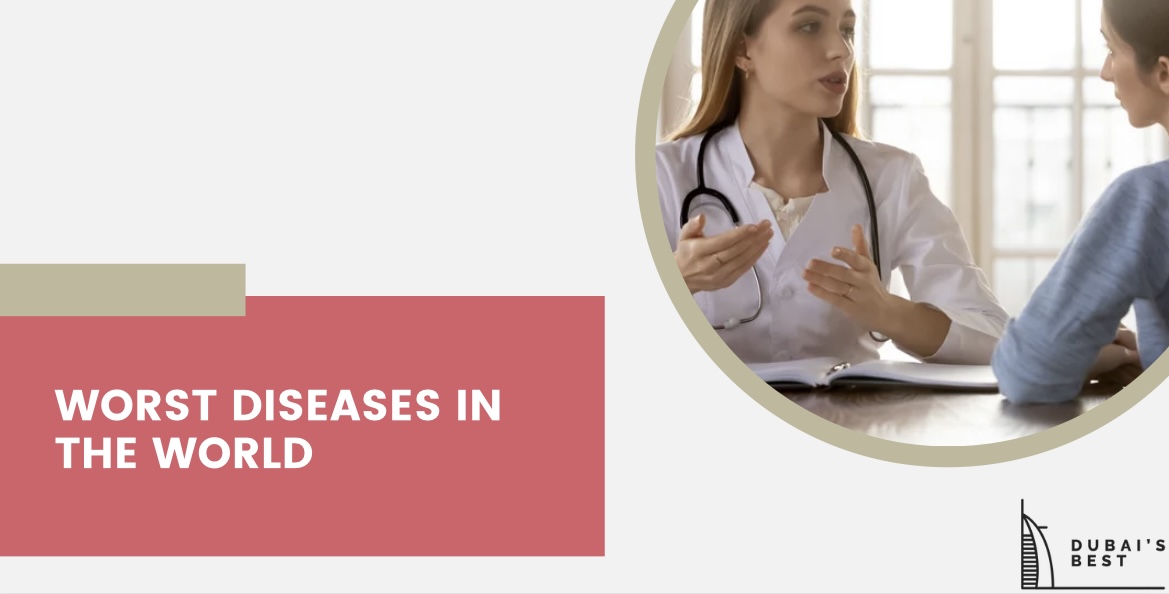Worst Diseases in the World
We live in a day and age where some diseases aren’t as feared as they once were. Cancer treatment, for instance, has seen remarkable progress in recent years, with cancer patients living longer and having increased survival rates.
When you have more awareness of certain diseases, you can be inclined to live a healthier lifestyle. Even as some diseases aren’t caused by an unhealthy lifestyle, knowing the symptoms and risks can help you prepare for them.
This is a better alternative compared to being astounded when a disease hits you out of nowhere. Learn about some common fatal diseases below.
1. Ischemic Heart Disease or Coronary Heart Disease
Coronary artery disease (CAD) is so dangerous and deadly because it tends to be a silent killer. Many people don’t realize they have CAD until they’ve had a heart attack or other heart-related event.
This is why it’s essential to know the risk factors of CAD and take steps to prevent the disease before it causes severe damage. The most significant risk factor for CAD is age.
The older you get, the greater your risk of developing CAD. Other risk factors include diabetes, smoking, family history, obesity, cholesterol levels, and blood pressure levels.
2. Stroke
Stroke is another one of the most deadly diseases worldwide. In addition to being a sudden, potentially fatal disease, stroke can also cause severe long-term disability.
Stroke symptoms vary depending on where the artery is blocked or leaking in your brain. For example, a stroke in the back of your brain might affect your vision, while a stroke in the front of your brain can impact your speech and movement.
Common stroke symptoms include numbness or weakness in either arm, face, or leg; confusion or difficulty speaking; challenge seeing in one or both eyes; difficulty walking or balancing; and severe headache without a known cause.
Risk factors for stroke include family history, blood pressure levels, lifestyle choices, ethnicity, and gender.
You may also tend to have a stroke if you’re always stressed since it makes your heart work harder and increases your blood pressure. You may take advantage of spa massages or a great self-care routine to manage your stress better.
3. Lower Respiratory Infections
Lower respiratory tract infections affect the lungs and are more serious than upper respiratory infections, which affect the nose and throat.
The main symptom is a cough, but other symptoms include chest pain, breathing difficulties, and fever. Several factors can cause this condition, including:
- viruses
- bacteria
- fungus
Lower respiratory tract infections are also known as lower respiratory tract illnesses (LRTIs). They’re widespread in children since they have smaller airways but can also affect adults.
You’re more likely to get low respiratory infections with factors such as a weakened immune system, asthma, crowded childcare settings for infants, flu, or poor air quality.
4. Trachea, Bronchus, and Lung Cancers
Cancer of the respiratory system occurs when respiratory cells mutate and develop into a cancerous growth. This includes cancers of the larynx, trachea, lungs, and bronchus.
Respiratory cancers are almost always due to environmental factors, including secondhand smoke and environmental toxins. Smoking is one of the primary causes of lung cancer.
In 2015, 4 million people died from respiratory cancer worldwide. The World Health Organization (WHO) predicts that by 2030, it will become the leading cause of cancer deaths worldwide.
Many people think that secondhand smoke is less harmful than actually taking a drag on a cigarette, but it can be just as dangerous. As people try to quit smoking, vaping has become increasingly popular.
However, vaping still leads to health problems. In fact, researchers have found that vaping may increase the risk of respiratory cancer by at least 30 percent.
Other factors that may cause respiratory cancers are family history and pollution.
5. Alzheimer’s Disease or Dementia
Alzheimer’s disease and dementia are not the same.
Dementia is a general term for a loss of memory and other mental abilities severe enough to interfere with daily life. Alzheimer’s is a type of dementia, being the most common one.
Most people with Alzheimer’s are 65 or older, but younger people can also get it. A rare form of Alzheimer’s disease, known as early-onset Alzheimer’s, affects people in their 30s, 40s, and 50s.
There is no cure for Alzheimer’s disease; however, there are treatments that may help slow down its progression and ease symptoms like depression and anxiety.
Medications may help improve thinking ability in some cases. Your doctor may prescribe cholinesterase inhibitors (Aricept or Exelon) or memantine (Namenda).
Other strategies that can ease the symptoms of Alzheimer’s disease include regular exercise, a healthy diet, a normal sleep pattern, and being socially active. You may also subscribe to a membership at your local gym and get a personal trainer to help you stay active.
While you can’t prevent all the diseases on this list entirely, you can always live a healthier lifestyle and incorporate better habits. You can start with regular exercise and a balanced diet and avoid neglecting a proper sleep pattern.
Also, consult a medical professional annually to ensure your optimal health.
More health professionals:
Best Endocrinologists in Dubai

